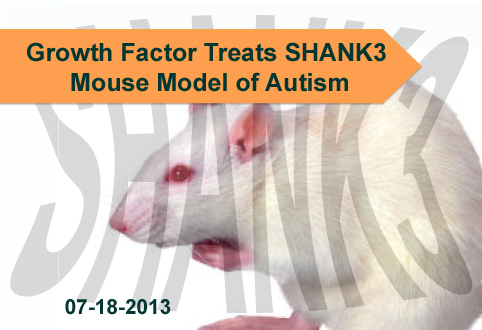Check out other stories from the Latest News
Mouse Model Supports IGF-1 Treatment Investigations
By Shana R. Spindler, Ph.D. on July 18, 2013

Background: Researchers have linked a small fraction of autism spectrum disorder (ASD) cases to mutations in SHANK3, a gene that codes for a scaffolding protein found at neural connections known as synapses. In mice, disruption of the Shank3 gene leads to neural signaling deficits, a decreased ability to alter synapses in response to experiences (a process known as long-term potentiation), and motor abnormalities.
A drug that can address synaptic disruption from SHANK3 mutations may be of benefit to a sub-population of people with ASD. Insulin like growth factor-1 (IGF-1), an approved drug for short stature in children, can enter the central nervous system to mediate synaptic development and activity and has shown promise in previous mouse and human studies of Rett syndrome.
What’s new: In a new study, researchers from the School of Medicine at Mount Sinai in New York, NY tested the effect of IGF-1 injections into a mouse model harboring an autism-linked disruption in one copy of the Shank3 gene. After daily injections for two weeks, mice showed improved neural signaling, restored long-term potentiation, and enhanced motor performance. This study was published April 27, 2013 in Molecular Autism.
Why it’s important: A double-blind clinical trial to study the safety and efficacy of IGF-1 treatment in children who have a SHANK3 gene deficiency and ASD is currently underway. Researchers do not fully understand how IGF-1 reverses the synaptic deficits observed with disruption of SHANK3.
Help me understand :
| Source(s) : |
| Tweet |

